Abstract
To assess the mixing characteristics of the right ventricle and pulmonary artery, radioiodinated 131I serum albumin and indocyanine green dye were injected simultaneously in 16 subjects. One indicator was injected into the atrium and the other into the ventricle, or both were injected at different sites in the ventricle. Washout curves were obtained by rapid catheter sampling alternately just above or just below the pulmonic valve. The washout of radioisotope was also recorded with a precordial scintillation detection probe.
Indicator washout from the ventricular inflow tract was rapid, while washout from the region of the ventricular apex was quite slow. Protosystolic dips in indicator concentration, noted in curves drawn below the pulmonic valve, suggest that the ventricle emptied sequentially. Flow values computed from curves sampled below the valve, when compared with reference values, suggest that a significant volume of atrial blood passed through the ventricle without mixing, or mixing to only a small extent, with the residual volume of the chamber. Peak concentration of indicator was higher below the pulmonic valve than above. This finding, plus the close agreement between flow values computed from curves sampled above the valve and the reference values, indicates that further mixing occurred above the valve.
Ventricular volumes computed from washout downslopes are systematically falsely high. This overestimate appeared to be larger in normal subjects than in patients with low stroke volumes. Progressive mixing of blood leaving the atrium occurs during its passage through the ventricle, pulmonic valve, and pulmonary artery and permits accurate estimation of flow.
Full text
PDF


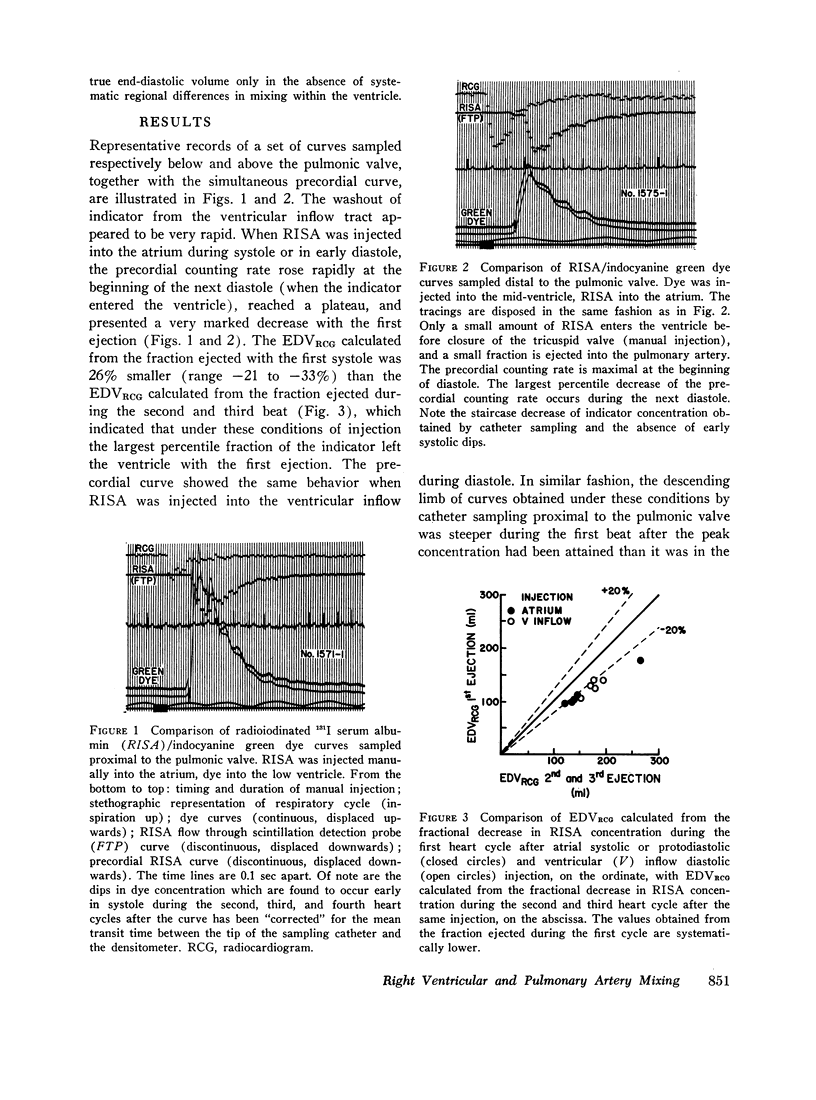
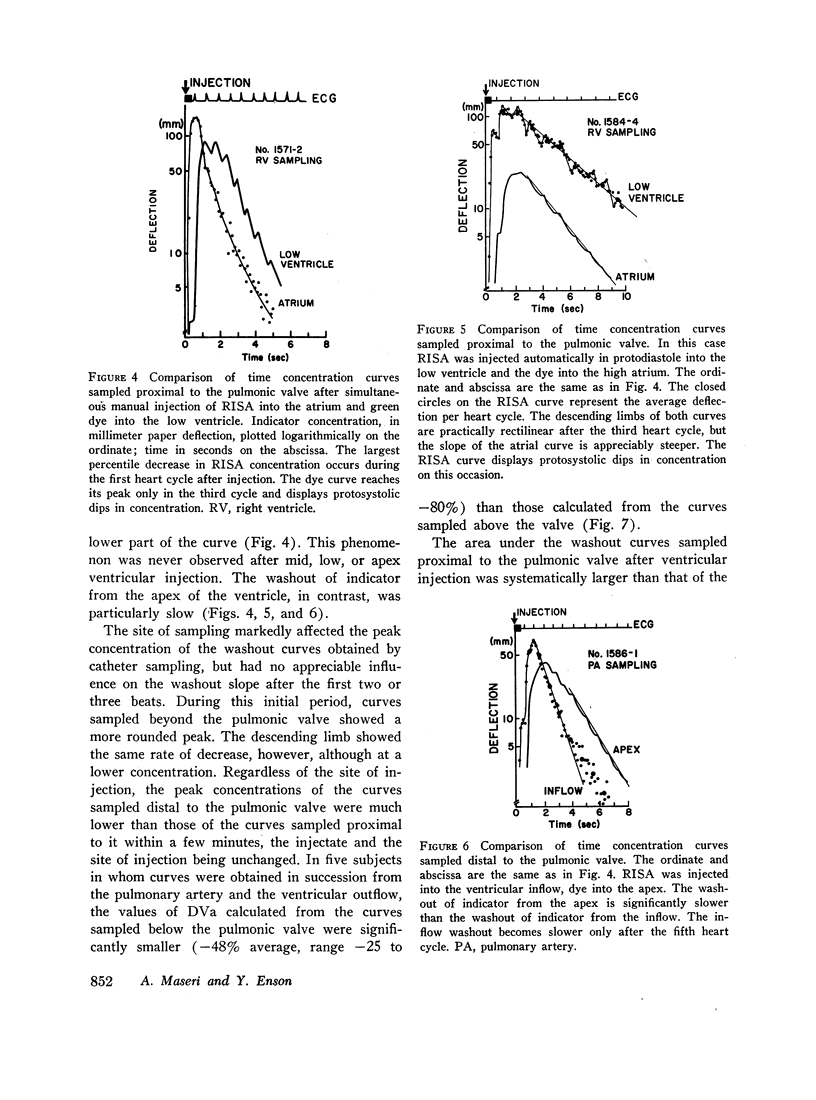
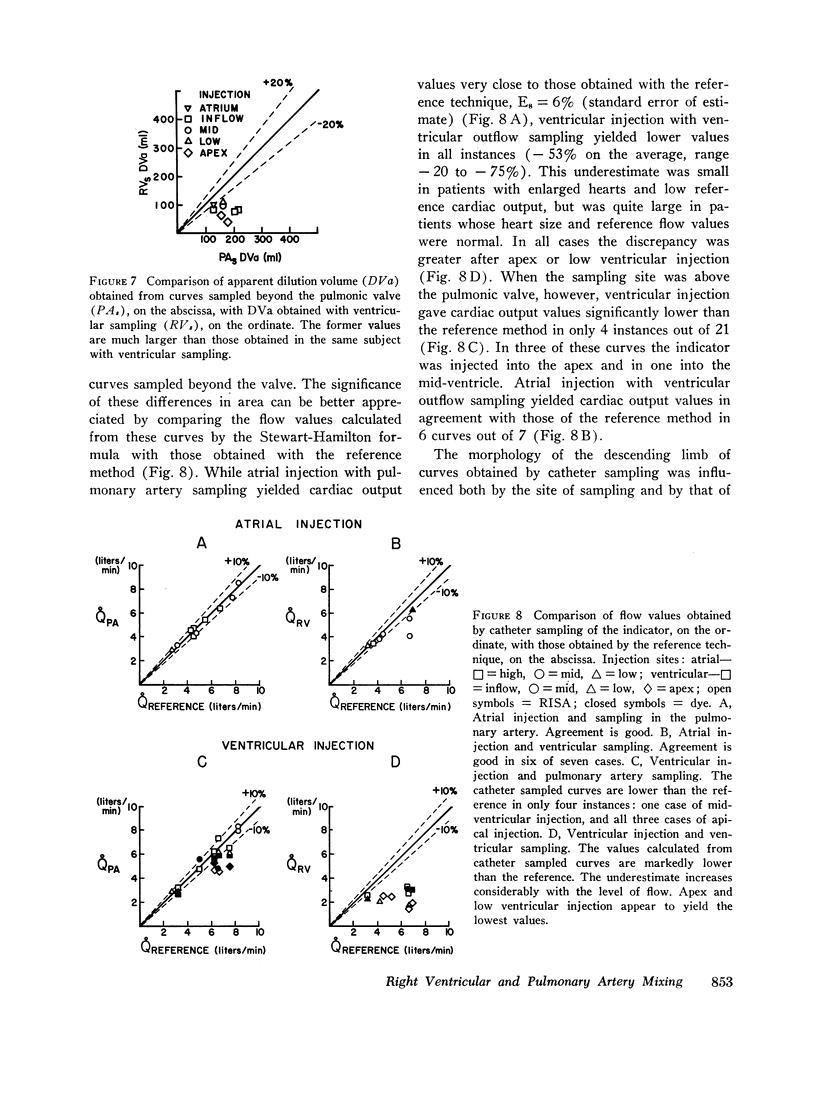
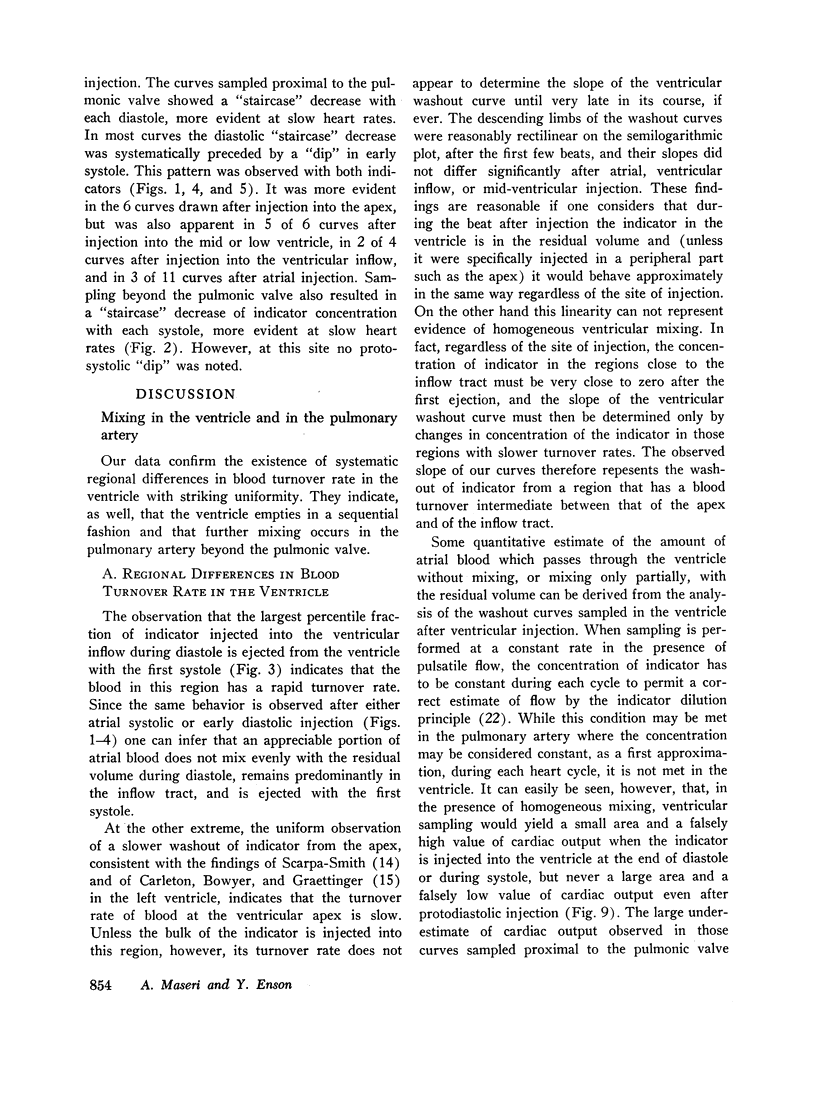
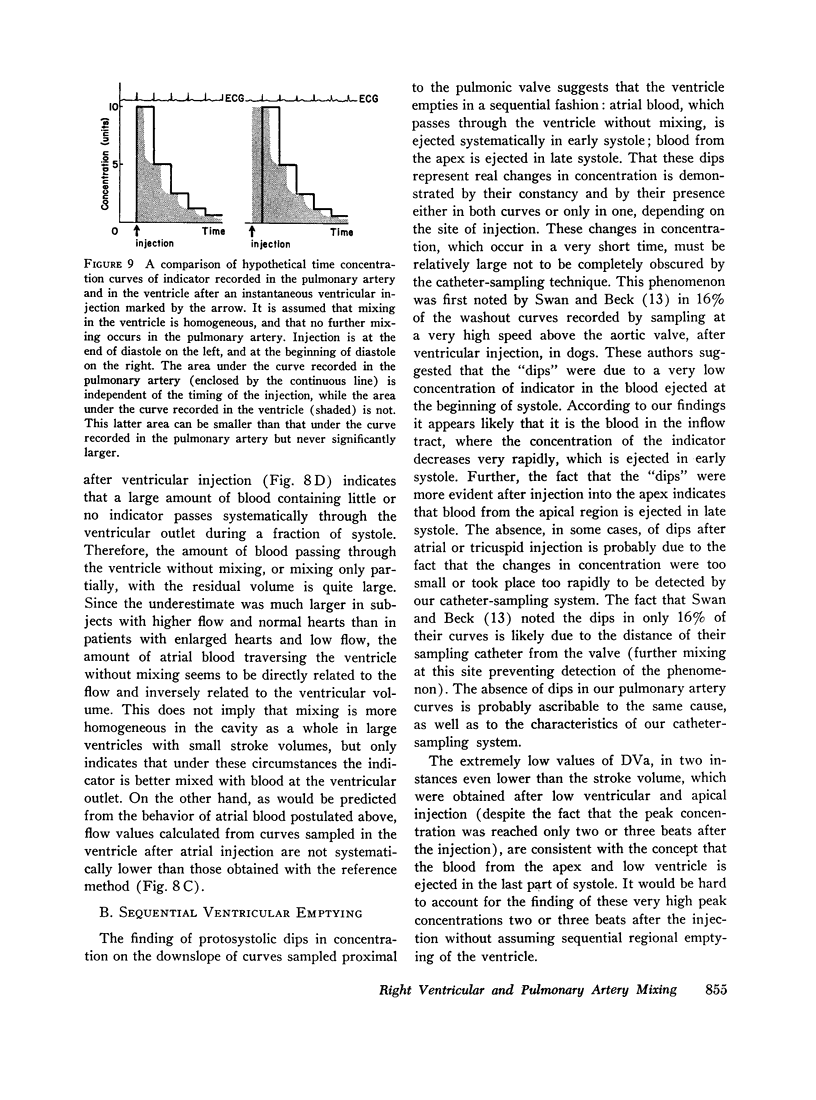
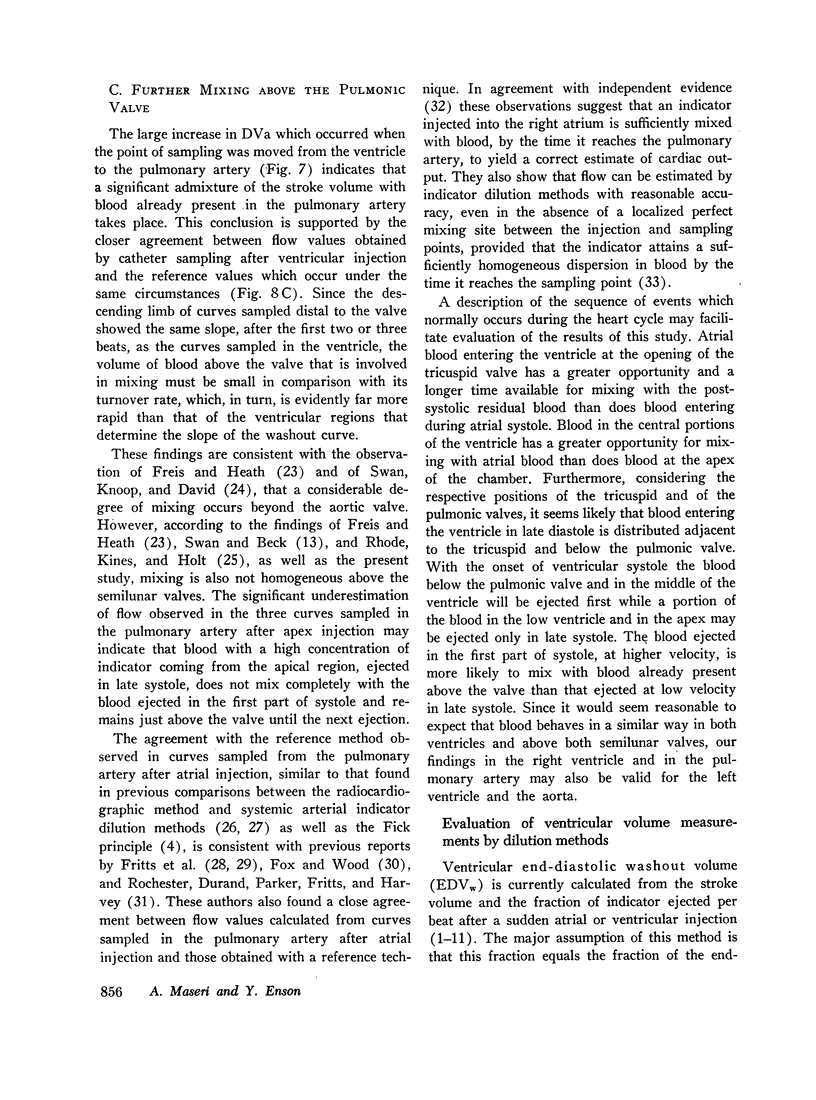
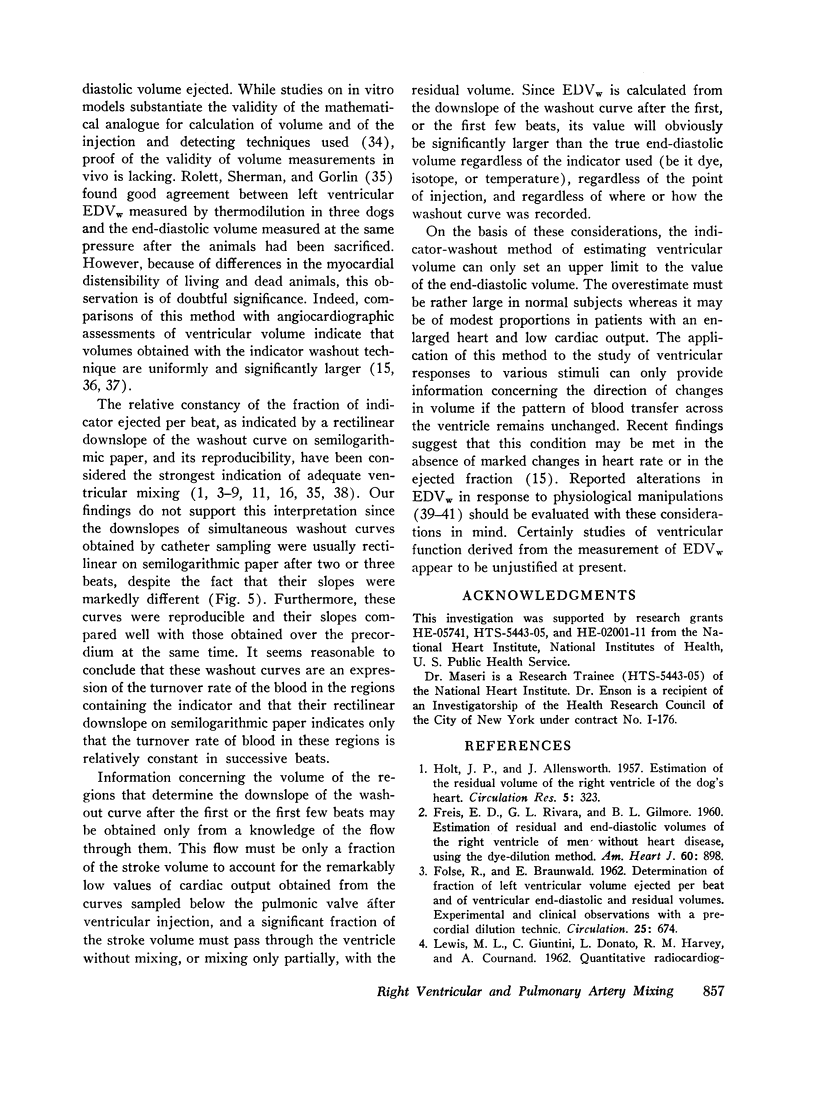
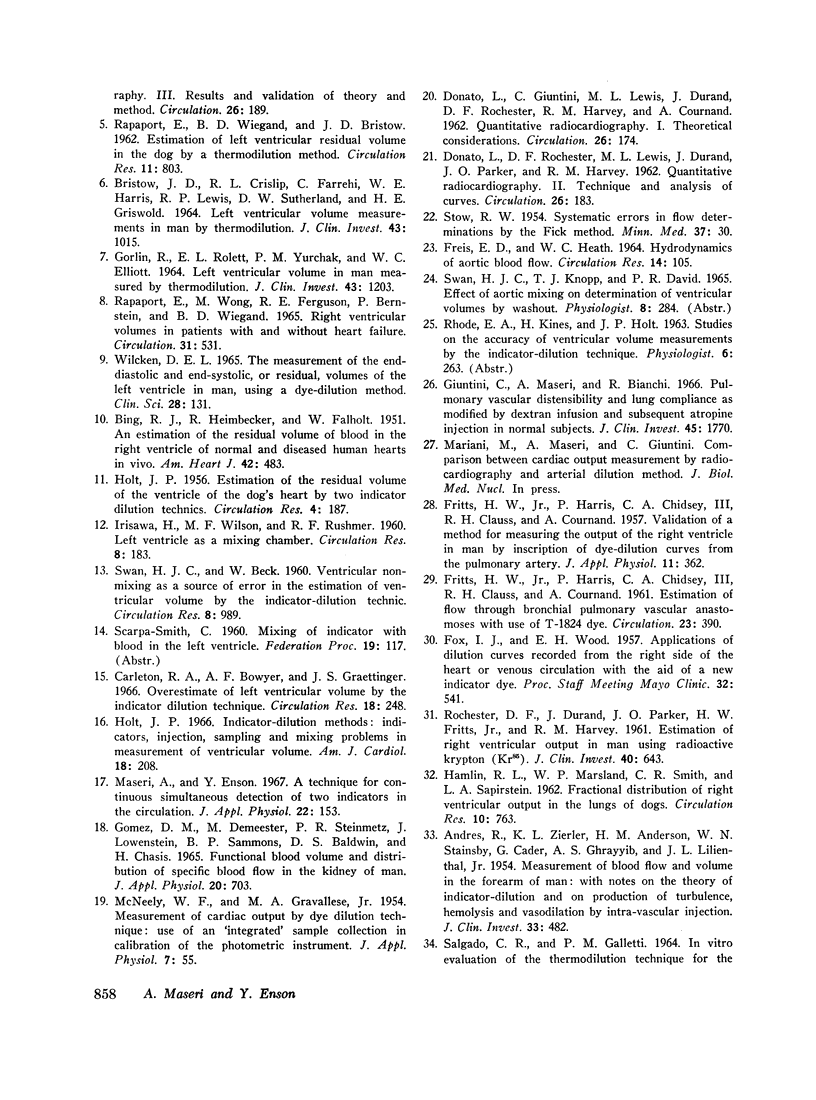
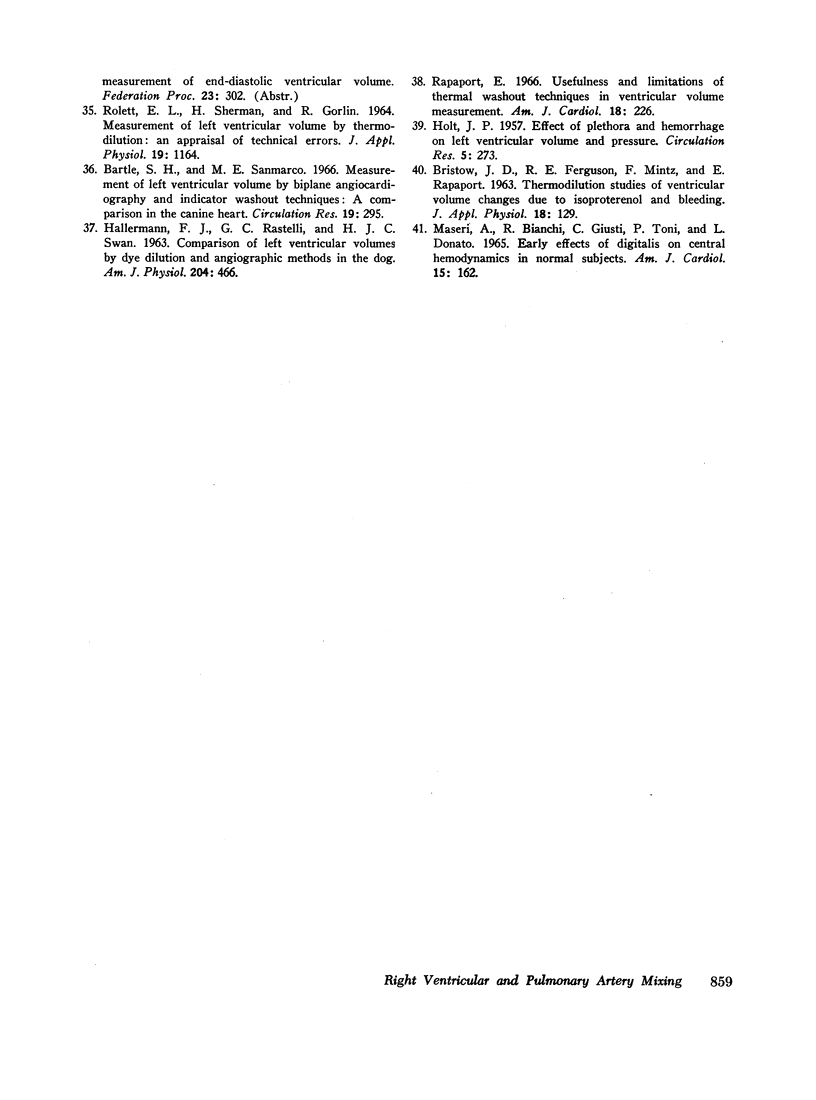
Images in this article
Selected References
These references are in PubMed. This may not be the complete list of references from this article.
- ANDRES R., ZIERLER K. L., ANDERSON H. M., STAINSBY W. N., CADER G., GHRAYYIB A. S., LILIENTHAL J. L., Jr Measurement of blood flow and volume in the forearm of man; with notes on the theory of indicator-dilution and on production of turbulence, hemolysis, and vasodilatation by intra-vascular injection. J Clin Invest. 1954 Apr;33(4):482–504. doi: 10.1172/JCI102919. [DOI] [PMC free article] [PubMed] [Google Scholar]
- BING R. J., HEIMBECKER R., FALHOLT W. An estimation of the residual volume of blood in the right ventricle of normal and diseased human hearts in vivo. Am Heart J. 1951 Oct;42(4):483–502. doi: 10.1016/0002-8703(51)90146-9. [DOI] [PubMed] [Google Scholar]
- BRISTOW J. D., CRISLIP R. L., FARREHI C., HARRIS W. E., LEWIS R. P., SUTHERLAND D. W., GRISWOLD H. E. LEFT VENTRICULAR VOLUME MEASUREMENTS IN MAN BY THERMODILUTION. J Clin Invest. 1964 Jun;43:1015–1024. doi: 10.1172/JCI104985. [DOI] [PMC free article] [PubMed] [Google Scholar]
- BRISTOW J. D., FERGUSON R. E., MINTZ F., RAPAPORT E. Thermodilution studies of ventricular volume changes due to isoproterenol and bleeding. J Appl Physiol. 1963 Jan;18:129–133. doi: 10.1152/jappl.1963.18.1.129. [DOI] [PubMed] [Google Scholar]
- Bartle S. H., Sanmarco M. E. Measurement of left ventricular volume by biplane angiocardiography and indicator-washout techniques: a comparison in the canine heart. Circ Res. 1966 Aug;19(2):295–306. doi: 10.1161/01.res.19.2.295. [DOI] [PubMed] [Google Scholar]
- Carleton R. A., Bowyer A. F., Graettinger J. S. Overestimation of left ventricular volume by the indicator dilution technique. Circ Res. 1966 Mar;18(3):248–256. doi: 10.1161/01.res.18.3.248. [DOI] [PubMed] [Google Scholar]
- DONATO L., GIUNTINI C., LEWIS M. L., DURAND J., ROCHESTER D. F., HARVEY R. M., COURNAND A. Quantitative radiocardiography. I. Theoretical considerations. Circulation. 1962 Aug;26:174–182. doi: 10.1161/01.cir.26.2.174. [DOI] [PubMed] [Google Scholar]
- FOLSE R., BRAUNWALD E. Determination of fraction of left ventricular volume ejected per beat and of ventricular end-diastolic and residual volumes. Experimental and clinical observations with a precordial dilution technic. Circulation. 1962 Apr;25:674–685. doi: 10.1161/01.cir.25.4.674. [DOI] [PubMed] [Google Scholar]
- FOX I. J., WOOD E. H. Applications of dilution curves recorded from the right side of the heart or venous circulation with the aid of a new indicator dye. Proc Staff Meet Mayo Clin. 1957 Sep 18;32(19):541–550. [PubMed] [Google Scholar]
- FREIS E. D., HEATH W. C. HYDRODYNAMICS OF AORTIC BLOOD FLOW. Circ Res. 1964 Feb;14:105–116. doi: 10.1161/01.res.14.2.105. [DOI] [PubMed] [Google Scholar]
- FREIS E. D., RIVARA G. L., GILMORE B. L. Estimation of residual and end-diastolic volumes of the right ventricle of men without heart disease, using the dye-dilution method. Am Heart J. 1960 Dec;60:898–906. doi: 10.1016/0002-8703(60)90121-6. [DOI] [PubMed] [Google Scholar]
- FRITTS H. W., Jr, HARRIS P., CHIDSEY C. A., 3rd, CLAUSS R. H., COURNAND A. Estimation of flow through bronchial-pulmonary vascular anastomoses with use of T-1824 dye. Circulation. 1961 Mar;23:390–398. doi: 10.1161/01.cir.23.3.390. [DOI] [PubMed] [Google Scholar]
- FRITTS H. W., Jr, HARRIS P., CHIDSEY C. A., 3rd, CLAUSS R. H., COURNAND A. Validation of a method for measuring the output of the right ventricle in man by inscription of dye-dilution curves from the pulmonary artery. J Appl Physiol. 1957 Nov;11(3):362–364. doi: 10.1152/jappl.1957.11.3.362. [DOI] [PubMed] [Google Scholar]
- GORLIN R., ROLETT E. L., YURCHAK P. M., ELLIOTT W. C. LEFT VENTRICULAR VOLUME IN MAN MEASURED BY THERMODILUTION. J Clin Invest. 1964 Jun;43:1203–1221. doi: 10.1172/JCI105004. [DOI] [PMC free article] [PubMed] [Google Scholar]
- Giuntini C., Maseri A., Bianchi R. Pulmonary vascular distensibility and lung compliance as modified by dextran infusion and subsequent atropine injection in normal subjects. J Clin Invest. 1966 Nov;45(11):1770–1789. doi: 10.1172/JCI105482. [DOI] [PMC free article] [PubMed] [Google Scholar]
- Gómez D. M., Demeester M., Steinmetz P. R., Lowenstein J., Sammons B. P., Baldwin D. S., Chasis H. Functional blood volume and distribution of specific blood flow in the kidney of man. J Appl Physiol. 1965 Jul;20(4):703–708. doi: 10.1152/jappl.1965.20.4.703. [DOI] [PubMed] [Google Scholar]
- HAMLIN R. L., MARSLAND W. P., SMITH C. R., SAPIRSTEIN L. A. Fractional distribution of right ventricular output in the lungs of dogs. Circ Res. 1962 May;10:763–766. doi: 10.1161/01.res.10.5.763. [DOI] [PubMed] [Google Scholar]
- HOLT J. P., ALLENSWORTH J. Estimation of the residual volume of the right ventricle of the dog's heart. Circ Res. 1957 May;5(3):323–326. doi: 10.1161/01.res.5.3.323. [DOI] [PubMed] [Google Scholar]
- HOLT J. P. Effects of plethora and hemorrhage on left ventricular volume and pressure. Circ Res. 1957 May;5(3):273–280. doi: 10.1161/01.res.5.3.273. [DOI] [PubMed] [Google Scholar]
- HOLT J. P. Estimation of the residual volume of the ventricle of the dog's heart by two indicator dilution technics. Circ Res. 1956 Mar;4(2):187–195. doi: 10.1161/01.res.4.2.187. [DOI] [PubMed] [Google Scholar]
- Holt J. P. Symposium on measurement of left ventricular volume. II. Indicator-dilution methods: indicators, injection, sampling and mixing problems in measurement of ventricular volume. Am J Cardiol. 1966 Aug;18(2):208–225. doi: 10.1016/0002-9149(66)90034-8. [DOI] [PubMed] [Google Scholar]
- IRISAWA H., WILSON M. F., RUSHMER R. F. Left ventricle as a mixing chamber. Circ Res. 1960 Jan;8:183–187. doi: 10.1161/01.res.8.1.183. [DOI] [PubMed] [Google Scholar]
- MASERI A., BIANCHI R., GIUSTI C., TONI P., DONATO L. EARLY EFFECTS OF DIGITALIS ON CENTRAL HEMODYNAMICS IN NORMAL SUBJECTS. Am J Cardiol. 1965 Feb;15:162–169. doi: 10.1016/0002-9149(65)90450-9. [DOI] [PubMed] [Google Scholar]
- Maseri A., Enson Y. A technique for continuous simultaneous detection of two indicators in the circulation. J Appl Physiol. 1967 Jan;22(1):153–157. doi: 10.1152/jappl.1967.22.1.153. [DOI] [PubMed] [Google Scholar]
- McNEELY W. F., GRAVALLESE M. A., Jr Measurement of cardiac output by dye dilution technique: use of an integrated sample collection in calibration of the photometric instrument. J Appl Physiol. 1954 Jul;7(1):55–58. doi: 10.1152/jappl.1954.7.1.55. [DOI] [PubMed] [Google Scholar]
- RAPAPORT E., WIEGAND B. D., BRISTOW J. D. Estimation of left ventricular residual volume in the dog by a thermodilution method. Circ Res. 1962 Nov;11:803–810. doi: 10.1161/01.res.11.5.803. [DOI] [PubMed] [Google Scholar]
- RAPAPORT E., WONG M., FERGUSON R. E., BERNSTEIN P., WIEGAND B. D. RIGHT VENTRICULAR VOLUMES IN PATIENTS WITH AND WITHOUT HEART FAILURE. Circulation. 1965 Apr;31:531–541. doi: 10.1161/01.cir.31.4.531. [DOI] [PubMed] [Google Scholar]
- ROCHESTER D. F., DURAND J., PARKER J. O., FRITTS H. W., Jr, HARVEY R. M. Estimation of right ventricular output in man using radioactive krypton (Kr85). J Clin Invest. 1961 Apr;40:643–648. doi: 10.1172/JCI104296. [DOI] [PMC free article] [PubMed] [Google Scholar]
- ROLETT E. L., SHERMAN H., GORLIN R. MEASUREMENT OF LEFT VENTRICULAR VOLUME BY THERMODILUTION: AN APPRAISAL OF TECHNICAL ERRORS. J Appl Physiol. 1964 Nov;19:1164–1174. doi: 10.1152/jappl.1964.19.6.1164. [DOI] [PubMed] [Google Scholar]
- STOW R. W. Systematic errors in flow determinations by the Fick method. Minn Med. 1954 Jan;37(1):30–35. [PubMed] [Google Scholar]
- SWAN H. J., BECK W. Ventricular nonmixing as a source of error in the estimation of ventricular volume by the indicator-dilution technic. Circ Res. 1960 Sep;8:989–998. doi: 10.1161/01.res.8.5.989. [DOI] [PubMed] [Google Scholar]
- WILCKEN D. E. THE MEASUREMENT OF THE END-DIASTOLIC AND END-SYSTOLIC, OR RESIDUAL, VOLUMES OF THE LEFT VENTRICLE IN MAN, USING A DYE-DILUTION METHOD. Clin Sci. 1965 Feb;28:131–146. [PubMed] [Google Scholar]



